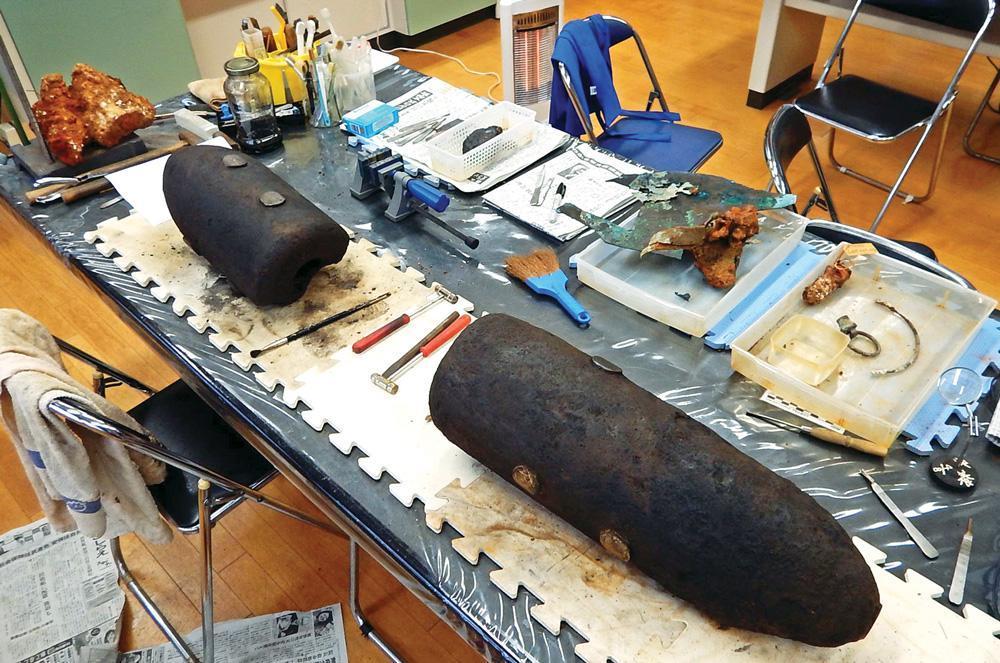
The first of this year’s excavations of the Ottoman frigate Ertuğrul, which sank on its way back from a goodwill voyage to Japan in 1890, kicked off on Jan. 5. After encountering a typhoon, the frigate broke into pieces on rocks off the island of Oshima and sank near the Japanese city of Kushimoto, causing the death of 550 Turkish sailors.
The excavation works, which were initiated 11 years ago, have been continuing 30-40 meters deep in the Pacific Ocean 200 meters away from land.
During 120 dives realized jointly by Turkish and Japanese divers, the bullets of the Ottoman frigate have so far been removed. Among them are three 52-kilogram British Palliser shells and three 30-kg cannon balls. They have been brought to light thanks to the divers after 127 years.
The excavation works also unearthed porcelain plates and wooden and metal pieces from the frigate. The artifacts were taken to the Ertuğrul Research Center and Conservation Lab in Kushimoto for further examinations.
The artifacts unearthed from the frigate have become known within a short time in Japan as well. School students in the city and history students at universities, as well as academics, have rushed to the center to get information from the head of the project, captain Tufan Turanlı.
At a recent conference organized in Japan, Turanlı used visuals to describe the project’s developments over the last 11 years and its contribution to the Turkish-Japanese friendship.
Turanlı said 8,130 artifacts were removed during the first year of the excavations and that they would focus on the conservation and restoration of the artifacts in this year’s works.
“The project team, which gives priority to the armory of the frigate and the findings there, is working on the desalination and conservation of the ammunition shells. Among them, two 18-centimeter shells have been conserved. Although this Palliser shell weighs 30 kg, the military records report that its real weight is 52 kg with the explosive inside it. The use of Palliser bullets was lifted by the British Navy after the 1880s because it lost its power in modern ship bodies,” he said.
Dr. Berta Maria Lledo Solbes Turanlı, Turanlı’s wife and archaeological head of the Ertuğrul frigate excavations said she would bring the Ertuğrul frigate exhibition to many parts of the world, especially Spain, in the shortest time.
“I will make the whole world hear the 127-year story of Turkish soldiers and military. I will gift the book I have written in six languages to our martyrs,” she said.
She added that the rescue and conservation works would continue until mid-May.
In 1890, the Ertuğrul frigate was sent to Japan as a goodwill ambassador by the Ottoman sultan Abdulhamid II. The sailors arrived in Japan after facing many difficulties during the 11-month cruise.
The frigate was met with great care by Emperor Meiji in Japan. At the emperor’s request, the ship’s commander Osman Pasha made his speech in Turkish.
The Ertuğrul shipwreck has brought the two countries closer and has formed the starting point for the project.
Including Osman Pasha, all 550 sailors died in the shipwreck. The villagers of Oshima have made a great effort to bury the Turkish martyrs.